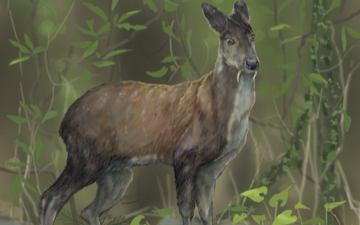Mammalia

Indian Rhinoceros
Rhinoceros unicornis


5 POINTS
TERAI
PLAY: The Indian rhino has a MOVE of 2.
FACT: Nepal’s first conservation law ensured the protection of rhinos and their habitat in 1957.

Wild Yak
Bos mutus


5 POINTS
MOUNTAIN
PLAY: The wild yak has a MOVE of 2
FACT: The wild yak was once considered extinct in Nepal, but was rediscovered in 2014. Nepalese currency celebrated this discovery.

Bengal Tiger
Panthera tigris tigris


7 POINTS
TERAI
PLAY: This Bengal tiger has a MOVE of 2.
FACT: In 2018, scientists estimated only 220 to 274 of these tigers in Nepal.

Snow Leopard
Panthera Uncia


8 POINTS
MOUNTAIN
PLAY: The snow leopard has a MOVE of 2
FACT: This leopard is listed as Vulnerable on the IUCN Red List with estimates of less than 10,000 left on the planet.

Musk Deer
Moschus Leucogaster


4 POINTS
MOUNTAIN
PLAY: The musk deer has a MOVE of 2
FACT: This animal is hunted for its musk which is one of the most valuable animal-derived products in the world.

Asiatic Elephant
Elephas maximus


5 POINTS
TERAI
PLAY: The asiatic elephant has a MOVE of 2
FACT: This elephant is the largest living land animal in Asia.